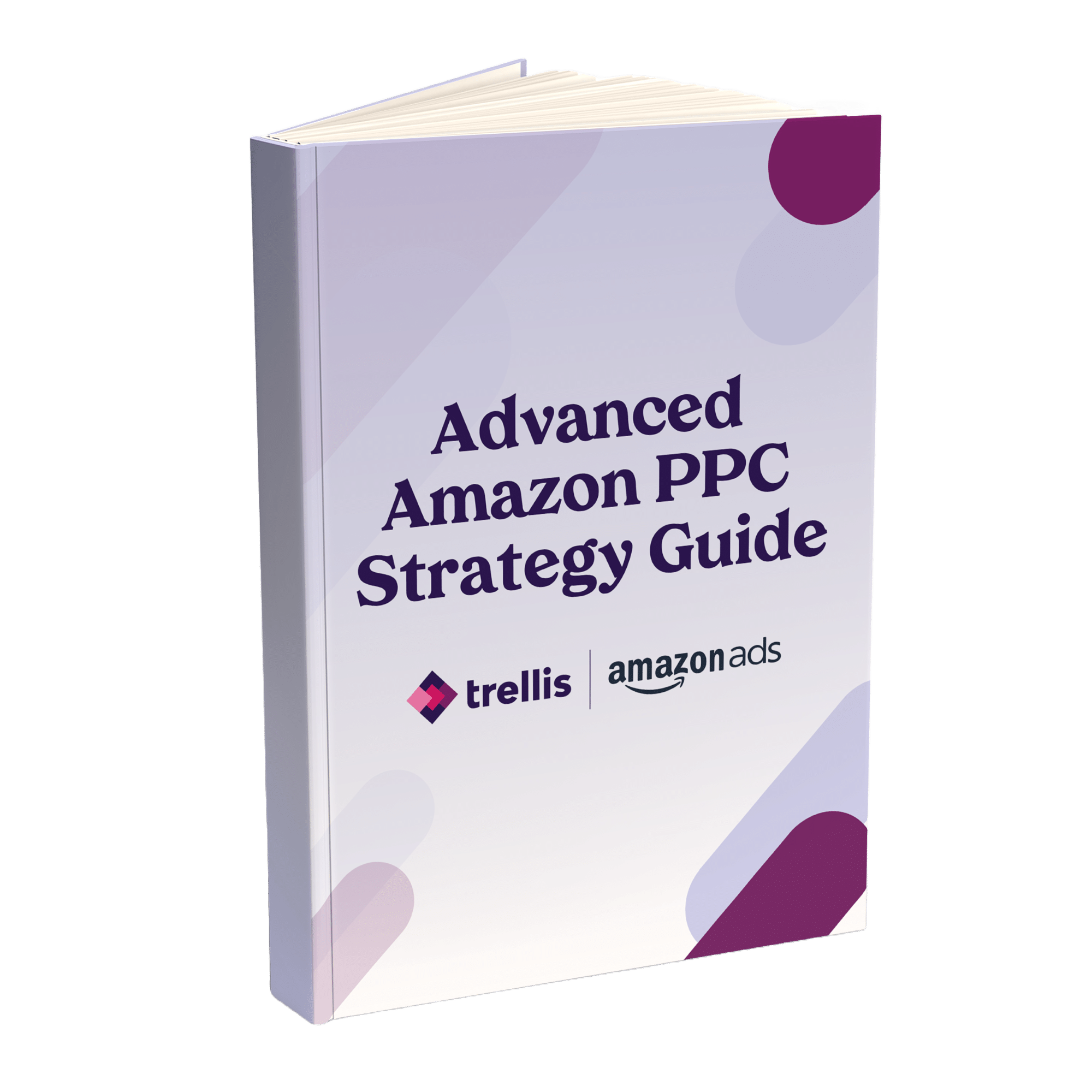If you sell on Amazon, every product you list has one thing in common: a Seller SKU. It may look like a random string of letters and numbers, but your SKU is one of the most important tools for tracking performance, managing inventory, and running smarter ads.
In this guide, we’ll break down what a Seller SKU is, why it matters, and how to create a clean, consistent SKU system that keeps your catalog organized and your data accurate. Whether you’re just starting out or managing hundreds of listings, getting your SKU strategy right will save time and boost your efficiency across every marketplace.
Want to see how real brands used smart catalog and SKU strategies to scale their sales? Check out our Success Stories to see how Trellis helps sellers grow profitably.
Key Insights
- Structure matters: A consistent, documented SKU system keeps your catalog organized and future-proof.
- Small mistakes cost time: Avoid reusing SKUs, inconsistent naming, and ignoring cross-channel alignment.
- Automation gives insight: Platforms like Trellis help you connect SKU data to pricing, advertising, and analytics for smarter growth.
Read more: Inventory-Aware PPC: How to Stop Wasting Spend on Low-On-Hand SKUs
What is Seller SKU on Amazon?
A Seller SKU (stock keeping unit) is a unique code consisting of alphanumeric characters assigned to a product by the seller. Commonly seen as a scannable barcode (but really it’s an internal alphanumeric ID), it tracks inventory and helps sellers list their products on Amazon.
When a product is created, the seller can assign their own SKU code or let Amazon auto-generate one. Once a SKU is created in Amazon, it cannot be changed or reused. You can only delete the listing and create a new SKU. If a product has variants (such as size or color), each variant will need its own SKU.

22 Rules to Increase Amazon Sales Up to 450%
Find out the proven framework we used to increase Amazon sales by 450%.
How to Create Seller SKU on Amazon?
Now that we’ve answered the question, “What is a seller SKU on Amazon?” it’s time to give you a quick overview of creating one. Amazon makes it pretty easy to create an SKU for each of your products. And as we mentioned earlier, Amazon has two types of seller SKU: Amazon-generated or seller-generated.
How to Create an Amazon-Generated SKU:
You can either let Amazon create an SKU for your products or do it yourself when selling on Amazon. If you decide to let Amazon handle it, here’s what you need to do:
- Log into your Amazon Seller Account and go to Inventory > Add a Product.
- Select the product category, then click the Amazon-Generated button under the SKU section.
- Enter the product information, then click Save and Finish.
Amazon will then assign an SKU to your product and add it to your inventory.
How to Create a Seller-Generated SKU:
If you’d instead create your own SKUs, here’s what you need to do:
- Log into your Amazon Seller Account and go to Inventory > Add a Product.
- Select the product category, then click the Seller-Generated button under the SKU section.
- Enter the product information to make up an SKU for your product, and click Save and Finish.
Amazon will then add your product to your inventory with the SKU you created.
Amazon-Generated SKUs vs. Your Own SKUs: What to Choose?
You might be wondering if you should let Amazon create SKUs for your products or create them yourself. And while there isn’t a right or wrong answer, there are some things to consider before making a decision.
Consider these factors when deciding which route to go:
- Amazon-Generated SKUs:
If you are like most Amazon sellers, you probably have a lot of products. And if that’s the case, it can be time-consuming to create a unique SKU for each product. Amazon-generated SKUs are great because they are quick and easy.
Amazon-generated SKUs are also great if you sell different products in different Amazon marketplaces. That’s because Amazon will automatically generate a unique SKU for each marketplace.
Read more: The Ultimate Guide to Amazon Retargeting Ads
- Your Own SKUs:
Creating your own SKUs gives you more control over your inventory. And if you use Amazon FBA, it can be helpful to have SKUs that match your other inventory management software. That way, you can easily keep track of your products across all channels.
Creating your SKUs can also be helpful if you sell in multiple Amazon marketplaces. That’s because you can use the same SKU for all marketplaces. That can help track and manage your inventory.

SKU Naming Framework
A strong SKU structure makes managing your catalog easier as you grow. It’s not just a random string of letters—it’s a roadmap for your products. Here’s a simple, scalable format to follow:
[Category] – [Product] – [Variant] – [Supplier or Season] – [Sequence Number]
Example: APP-TSHIRT-BLK-L-SPR24
This SKU tells you it’s an Apparel (APP) item, T-shirt, Black, Large, from Spring 2024.
Optional elements to consider:
- Category or department code: Keeps your catalog grouped logically.
- Variant details: Color, size, bundle type, etc.
- Supplier, batch, or warehouse code: Useful for tracking fulfillment or returns.
- Season or collection tag: Helps with planning and reporting.
- Sequential numbers: Keep things organized as you add new items.
How to Find Your Existing Amazon SKUs
If you already sell on Amazon, you can easily check or export your current SKUs.
Here’s how to find them:
- Log in to your Amazon Seller Central account.
- Go to Inventory › Manage Inventory.
- Look for the SKU column next to each product.
- To download them, head to Inventory › Inventory Reports › Active Listings Report.
- Click Request Report, then Download when it’s ready.
- You’ll get a CSV file listing every active SKU in your catalog. Keep this file updated.
What Are SKU Rules and Limits?
Think of your SKUs like digital fingerprints…each one should be clean, unique, and traceable. Before you start creating Seller SKUs, it’s important to know the rules. Amazon has specific guidelines, and following them from day one will save you a lot of cleanup later.
- SKU length: Amazon allows up to 40 characters. Keep them short and readable.
- Allowed characters: Use only letters (A–Z), numbers (0–9), hyphens (-), and underscores (_).
- No spaces or special symbols: Amazon’s system can reject or misread them.
- Case-sensitive: ABC123 and abc123 are different SKUs. Pick one style and stick with it.
- Unique to each listing: No two products should share the same SKU.
- Permanent: Once you create a SKU, you can’t edit or reuse it—even if the listing is deleted.
- Avoid confusing characters: Skip letters and numbers that look alike (like O/0 or I/1).
- Stay consistent across stores: Using the same SKU across marketplaces (Amazon, Walmart, Shopify) helps with analytics and automation.
Why Do You Need a Seller SKU on Amazon?
In a tech-driven era where online shopping is the new normal, it has become increasingly crucial for businesses to have an online presence. Not only do you need to be visible, but you also need to be easily searchable and have a system in place that allows customers to purchase your products with ease.
That’s where Amazon comes in. Amazon is the world’s largest online marketplace, and it provides businesses with the perfect platform to sell their products. But to sell on Amazon, you need to have a seller SKU.
There are several benefits of having a seller SKU, which include:
Helps Ease Data Management
Integrating SKU on Amazon across all spreadsheets and software products makes it much easier to keep data tidy, accessible, and free of human error. Inventory management, for example, is a breeze in supply chain software that links to Amazon Seller Central and relies on SKU codes to keep track of stock levels.
Improves Amazon Listings
Optimizing Amazon listings is essential for Amazon’s success, and one crucial way to do this is by including SKUs in your product descriptions. This allows Amazon’s search engine to pick up on keywords and match them with products, making it more likely for potential customers to find your products when they’re searching for something specific.
Make Amazon PPC More Effective
If you’re running Amazon PPC (pay per click) campaigns, having a seller SKU can make a big difference in campaign effectiveness. Amazon PPC allows you to bid on keywords and have your ad appear in the search results when someone searches for that keyword. By including your seller SKU in your ad, you’re more likely to catch the attention of potential customers and get them to click through to your product page.
Allows for Better Amazon Advertising Reporting
When it comes to Amazon advertising, tracking and measuring your results is essential. By having a seller SKU, you can more easily see which ads are performing well and which ones aren’t. This allows you to make necessary changes to your campaigns and improve your overall Amazon advertising strategy.
Improves Product Identification and Representation
When all products have an SKU, it becomes easy for employees, customers, and other business partners to identify a product without confusion. The alpha-numeric code used in each product’s SKU is unique, giving every product its own identity. This can come in handy when a consumer discusses a product they want to purchase with customer service or when an employee is trying to find a product in the warehouse.
Facilitates Listing Creation and Matching Product Data
Another significant advantage of using SKUs is that they make it possible to create product listings on Amazon and other marketplaces quickly. All you need is the SKU code and product name to start in most cases. You can then fill in additional details like photos, descriptions, and pricing.
Makes Order Fulfillment More Efficient
Fulfilling orders is another area where SKUs can make a big difference. When all of your products have SKUs, it’s much easier to scan items and match them with customer orders. It’s also easier to track inventory levels and reorder products when necessary.
Amazon Requires the Seller SKU for Product Listings
Last but not least, it’s important to note that Amazon requires sellers to have an SKU for every product they list on the site. Amazon will use the unique code to tie each seller’s products with their own product information in the Amazon catalog. Therefore, it’s crucial to have an SKU for every product you plan to list on Amazon, even when not currently using other software to manage your inventory.

22 Rules to Increase Amazon Sales Up to 450%
Find out the proven framework we used to increase Amazon sales by 450%.
How Trellis Can Help With SKU Management and Catalog Optimization
Trellis connects advertising, pricing, and catalog data in one platform—so your SKUs actually work for you. Our AI analyzes SKU-level performance across Amazon and Walmart to uncover what’s driving profit, which products need price adjustments, and how to scale efficiently.
By integrating SKU data into performance analytics, Trellis helps you make faster, smarter decisions. From dynamic repricing to reporting automation, every feature supports cleaner, more actionable catalog insights.
Ready to align your SKU strategy with real performance data? Book a demo today to see how Trellis can help you turn catalog chaos into clarity.
What is the Difference Between an Amazon SKU, FNSKU, and UPC?
While the terms Amazon SKU, FNSKU, and UPC are often used interchangeably, there are subtle differences between them. It is common for Amazon sellers to get confused about the terms, but it is crucial to understand the difference as it can impact your Amazon business in several ways.
As earlier stated, Amazon SKU (stock keeping unit) is a code assigned by the seller to their products. The Amazon SKU code is for internal use as it is only visible to the seller and is never seen or used by customers. Amazon SKU is mainly used for inventory management and Amazon reporting purposes.
On the other hand, FNSKU, an acronym for “Fulfillment Network Stock-Keeping Unit,” is a code assigned by Amazon to products sold on its platform. The code is vital for identifying, tracking, and managing your inventory on Amazon. It also helps with customer service inquiries, refunds, and returns.
Lastly, unlike the SKU and FNSKU, a UPC (Universal Product Code) is not unique to Amazon. It’s a 12-digit code assigned to products by the manufacturer and helps identify the product across all retailers. All products listed for sale in the US must have a UPC.
Common Mistakes When Creating SKUs
Even experienced sellers can make mistakes when creating or managing SKUs. Here are the most common ones to avoid:
- Reusing old SKUs: Every SKU should be permanent. Don’t recycle them for new products.
- Skipping documentation: Without a clear guide, your team might create inconsistent SKUs that break reporting.
- Random naming patterns: If your SKUs don’t follow a structure, analyzing them later becomes a nightmare.
- Ignoring other channels: Make sure SKUs align across Amazon, Walmart, and your internal systems.
- Overcomplicating your format: Keep it short and meaningful. Too many details make SKUs hard to read.
- Not integrating with analytics tools: Trellis connects SKU data to your advertising, pricing, and reporting—so you can see how each product drives performance.
In Summary: Seller SKU Amazon
If you’re looking to increase your sales on Amazon, you must understand what Seller SKU is and how it can help you. Having a unique identifier for your products – whether it is an Amazon SKU, FNSKU, or UPC – allows customers to find your items more efficiently and increases the chances of making a purchase.
Our team at Trellis can help you create these identifiers and manage your listings on Amazon so that you can focus on what you do best – making great products! Have questions about Seller SKU or any of our other services? Contact us today, and we’ll be happy to help.

Increase Amazon Sales By 30%
Our Advanced Amazon PPC Guide is everything you need to take your Amazon profits to the next level.

22 Rules to Increase Amazon Sales Up to 450%
Find out the proven framework we used to increase Amazon sales by 450%.
Stay ahead of marketplace trends with The Climb, Trellis’s monthly newsletter. Get quick updates, expert insights, and tools to help your eCommerce business grow…straight to your inbox.






